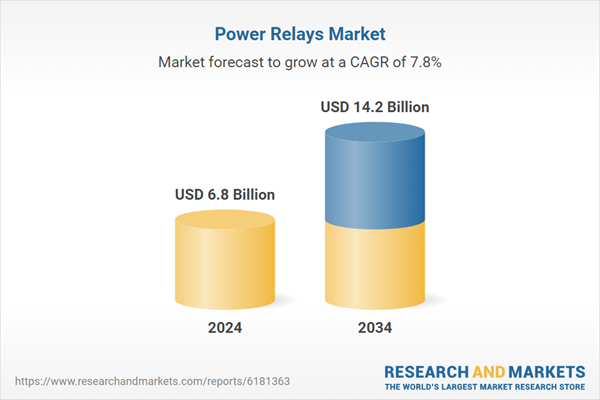Increasing focus on electrification, rising automation across industries, and the need for dependable switching technologies are driving steady demand for power relays worldwide. These components serve a critical function by managing high-voltage and high-current circuits through low-power signals, ensuring enhanced safety, efficiency, and operational control. By separating control circuits from high-load circuits, they help reduce risks while improving system performance across various applications. Expanding use of smart grids, alongside a shift toward digital substations, is prompting increased deployment of intelligent relays with remote monitoring and diagnostics capabilities. These trends are fueling demand for medium and high-voltage relays in grid management, renewable integration, and critical infrastructure. With electrical networks growing more complex and the demand for energy efficiency on the rise, industries are increasingly turning to next-generation relay systems to support automation, fault isolation, and real-time protection. As sectors such as manufacturing, power distribution, consumer electronics, and transportation continue evolving, the role of power relays in enabling safe and efficient switching operations is becoming even more indispensable.
The low-voltage power relays segment will reach USD 780 million by 2034, supported by the growing importance of energy-saving systems across industrial, commercial, and residential applications. These relays are favored in environments that require reliable, low-energy switching, such as smart buildings, automation systems, and HVAC networks, where efficiency and reduced power loss are top priorities. Their ability to support compact and responsive control systems is significantly influencing their rising adoption.
The electromechanical relays segment held a 77.3% share in 2024 and is expected to grow at 7% CAGR through 2034. Their reliability, cost-effectiveness, and robust performance under harsh environmental conditions continue to drive demand. Known for delivering solid electrical isolation and being easy to maintain, EMRs are evolving with design enhancements that include faster switching speeds, compact structures, and longer operating life. These developments are keeping them relevant in both legacy systems and modern, automated environments.
Europe Power Relays Market is poised to generate USD 3.5 billion by 2034, backed by large-scale grid upgrades, ongoing clean energy transitions, and expanding electric transport systems. Automation growth and smart grid rollouts across the region are encouraging the deployment of sophisticated relay technologies to ensure efficient power flow and regulatory compliance. As energy efficiency standards become stricter, utilities and industrial users are increasingly relying on advanced relays to meet carbon reduction goals and maintain operational integrity.
Key players shaping the competitive landscape of the Global Power Relays Industry include Leone Relay, Sensata Technologies, Kura Electronics & Electricals, Siemens, ABB, Shenler Relay, Schneider Electric, Panasonic, Fujitsu Electric, Fuji Electric, Eaton, TE Connectivity, Omron, Ningbo Huaguan Electronics, and Durakool. To strengthen their presence, companies in the power relays market are pursuing multi-faceted strategies focused on product innovation, digital integration, and global expansion. Many are investing in advanced materials and designs to increase relay durability, switching precision, and energy efficiency. Firms are also integrating IoT compatibility and remote diagnostics into their relay offerings to align with smart grid and Industry 4.0 trends. Expanding manufacturing capabilities and establishing localized production units are helping reduce costs and cater to regional demands.
Comprehensive Market Analysis and Forecast
- Industry trends, key growth drivers, challenges, future opportunities, and regulatory landscape
- Competitive landscape with Porter’s Five Forces and PESTEL analysis
- Market size, segmentation, and regional forecasts
- In-depth company profiles, business strategies, financial insights, and SWOT analysis
This product will be delivered within 2-4 business days.
Table of Contents
Companies Mentioned
The companies profiled in this Power Relays market report include:- ABB
- Durakool
- Eaton
- Fuji Electric
- Fujitsu Electric
- Kura Electronics & Electricals
- Leone Relay
- Ningbo Huaguan Electronics
- Omron
- Panasonic
- Schneider Electric
- Sensata Technologies
- Shenler Relay
- Siemens
- TE Connectivity
Table Information
| Report Attribute | Details |
|---|---|
| No. of Pages | 150 |
| Published | October 2025 |
| Forecast Period | 2024 - 2034 |
| Estimated Market Value ( USD | $ 6.8 Billion |
| Forecasted Market Value ( USD | $ 14.2 Billion |
| Compound Annual Growth Rate | 7.8% |
| Regions Covered | Global |
| No. of Companies Mentioned | 16 |









